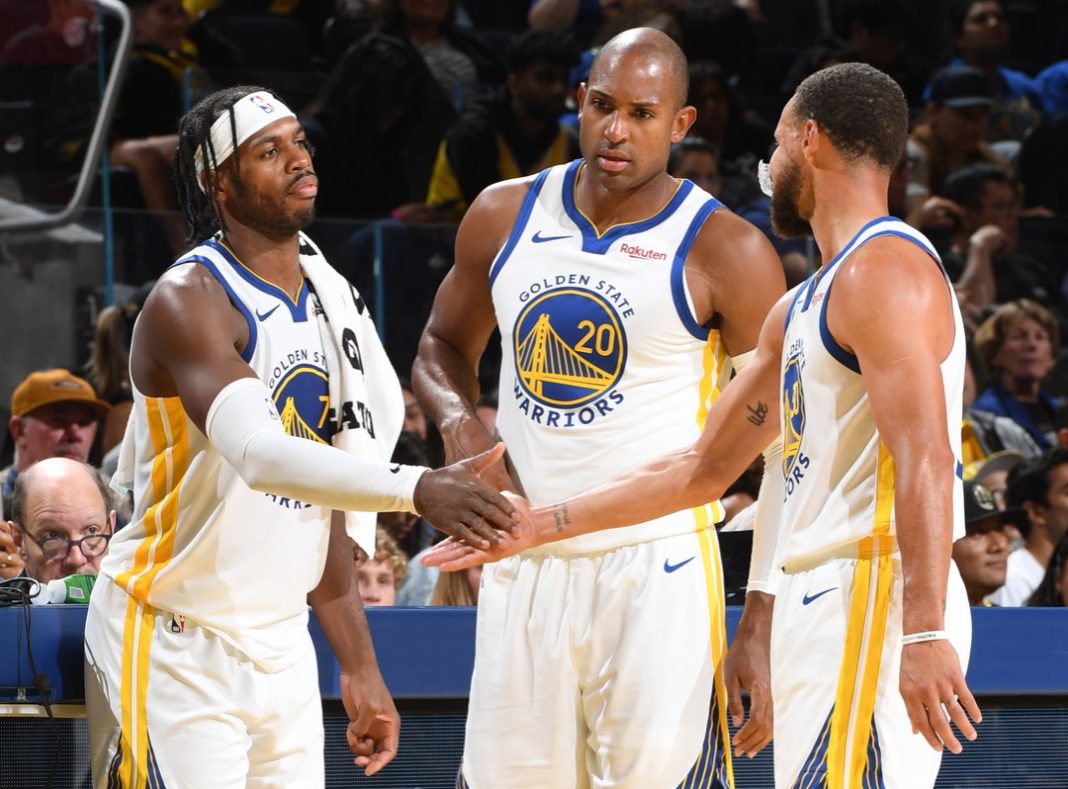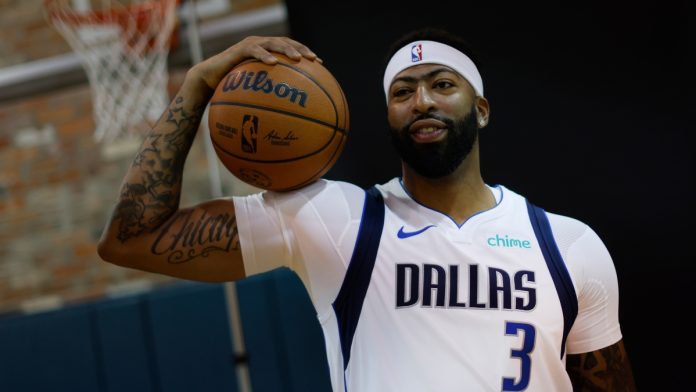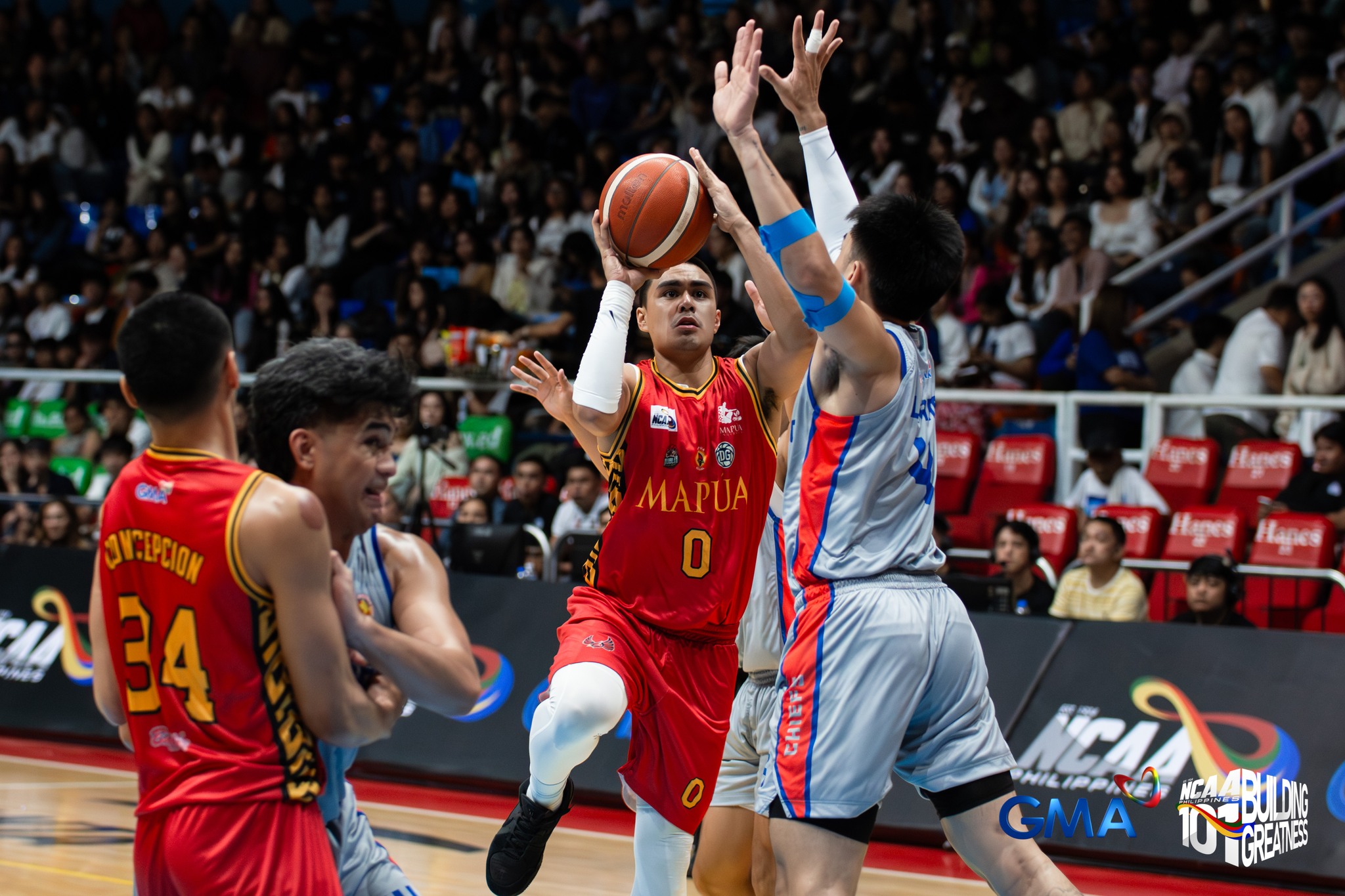The Golden State Warriors were riding a wave of strong form into last year’s postseason before injuries stopped their momentum. This season, with their core largely intact, key players showing growth, and the addition of new talents, they remain one of the league’s most intriguing teams. Below are several reasons why they may win it all, alongside key issues that could hold them back.
STRENGTHS
1. IMPROVED SPACING AND SHOOTING
The Warriors have a loaded backcourt with 11 players all competing in the guard spot, giving Golden State a good problem with all the ball-handling and shooting options. They added the most efficient shooter in the league, Seth Curry, who led the league in three-point percentage last season at 45.6%. He joined players like Podziemski, Hield, and Moody, who all provided consistent floor spacing, each shooting at 37% last season. Melton adds even more depth, averaging 1.5 threes on 36.9% shooting from three in his career. Last season with the team, he averaged 10.3 points in six games.
The Warriors also addressed a long-standing need for a stretch big by adding Horford. In his last three seasons with Boston, he averaged a remarkable 40.9% shooting from three while attempting nearly 5 three-pointers per game. That said, the Warriors, who ranked fourth in the league last year with 15.4 made threes per game, could become an even more potent perimeter threat this season.
2. ELITE DEFENSE
Since acquiring Butler, the Warriors have transformed into an elite defensive unit. Over that span, they not only posted the league’s number one defensive rating but also finished the season on a 23-8 record. The team also ranked in the top ten across several key defensive categories, including steals, plus-minus, forcing turnovers, opponents’ points, and opponents’ field goal statistics.
Draymond Green remains one of the best defensive big men in the league, ranking 3rd in defensive rating, while Horford is not far behind at 9th. Payton II and Melton both provide strong perimeter defense, while Butler’s ability to guard multiple positions gives them an additional edge. With not many changes to the roster, the Warriors should remain as one of the top defensive teams in the upcoming season.
3. BETTER OFFENSE
The Warriors have emerged as one of the league’s top offensive teams, ranking seventh overall with 119.4 points per 100 possessions following the arrival of Jimmy Butler. His impact was immediately felt, particularly in his ability to draw fouls. Before his addition, Golden State ranked 17th in free throws made, but they surged to the top spot, averaging 20.5 per game at the end of the season. The Warriors also struggled to generate points in the paint, ranking 26th in the league with just 44.9 points per game. However, the arrival of additional shooting threats should give Butler and the rest of the roster more room to operate inside. Steph Curry, on the other hand, continues to be the steady engine of their offense, maintaining an elite level of play by averaging 24 points per game over the past five seasons. That said, the Warriors should remain among the top 10 best offenses in the league next season.
CHALLENGES
1. LACK OF SIZE AND INTERIOR PRESENCE
Last season, the Warriors were among the league’s worst teams in rebounding. This weakness was exposed in the playoffs, where they ranked second-to-last in defensive rebounding. In the first round, the Rockets outmuscled them in the interior, giving up 46.9 points per game in the paint (6th in the postseason) and 13.4 offensive rebounds (1st in the postseason). Things got worse versus the Timberwolves, as they allowed 53.2 points per game, including 72 in their Game 5 loss. The issue deepened in the offseason with Looney’s departure, leaving a major hole in their interior defense. Horford may not be able to fill much of the role with his age, meaning Kerr will mostly rely on small-ball lineups, and Draymond Green may once again have to shoulder most of the frontcourt burden. This will be a concern since opponents will likely exploit these mismatches.
2. INCONSISTENT SUPPORTING CAST
The Warriors have several players who showed flashes of promise last season. However, consistency remains a problem for this group. Brandin Podziemski displayed his scoring prowess in April, averaging 17.4 points on 50.5% shooting from the field and an impressive 48.1% from three. Still, he had a lackluster start to the season, averaging just 7.5 points in November and December. Post also proved to be a valuable scoring option, contributing 8 points per game while hitting 40.8% from three in just 16 minutes of action, but he struggled on both ends of the floor come playoff time. Both Buddy Hield and Jonathan Kuminga had their moments in the postseason—Hield averaged nearly 15 points, while Kuminga posted 20.8 points per game against the Timberwolves. Kuminga also averaged 15.3 points off the bench last season but was a DNP in some games, and it remains uncertain whether Steve Kerr can establish a defined role for him moving forward. Hield likewise had several strong performances, but he struggled with his shot mid-season.
3. AGING ROSTER
The Warriors, with an average age of 27.53, enter the season as the second-oldest team in the league. Their veteran-heavy roster features four potential starters aged 35 or older, bringing a wealth of experience, leadership, and playoff composure. However, that same experience comes with potential downsides as the team may struggle to keep up with younger, faster, and more athletic opponents. Last playoffs, the Warriors struggled to defend in transition, ranking at 11th. Offensively, they also preferred a slower tempo, finishing 17th in pace, 18th in ball possession rate, and 20th in fast-break points last season. That said, Golden State is likely to rely again on their half-court offense, where they need to be consistent in their execution and shooting to be effective. Another concern is staying healthy. With several veterans on the roster, the Warriors will need to manage their rotations and workloads effectively for them to avoid potential injuries.







